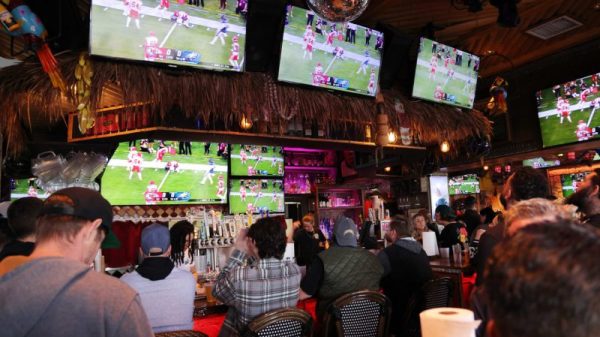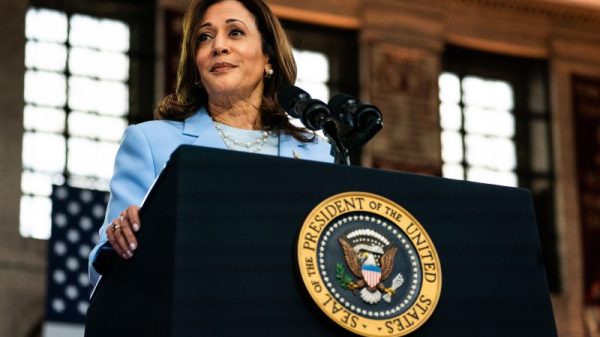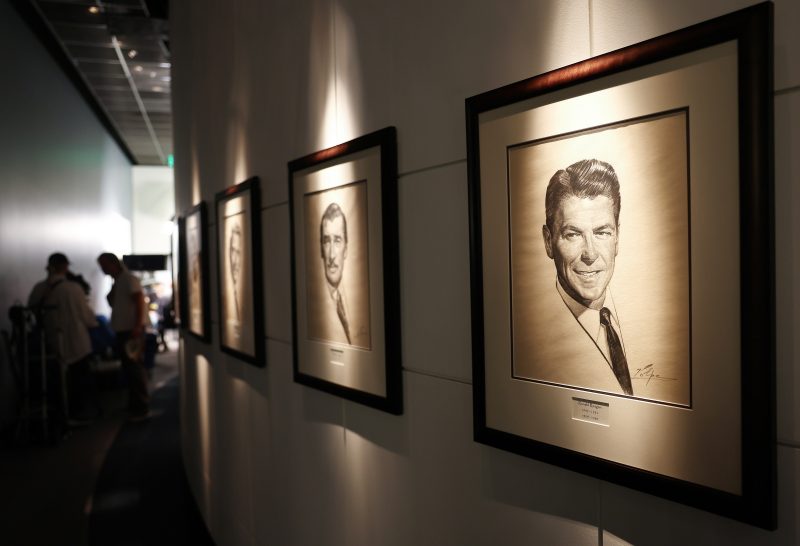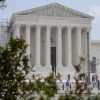The year was 1959, and talks between the Screen Actors Guild and movie studios had stalled.
The actors sought residual payments from TV channels that reran films they’d worked on, in what would have been a drastic shake-up. Producers, seeking higher profits from new media, refused to negotiate.
So SAG called in a ringer who had retired from union leadership: Ronald Reagan.
Reagan, an actor and Democrat at the time, served as SAG’s president from 1947 to 1952, winning for television actors the kind of residuals movie actors wanted, and eventually helping cement Hollywood as the new capital of TV production.
After agreeing to return to the SAG presidency in 1959, he would preside over a five-week strike that resulted in SAG winning residual payments for film actors. Hollywood writers also staged a strike, getting their own payments for movies screened on TV; theirs lasted 21 weeks.
In a move that would be echoed this summer, the dual strikes in 1960 aligned writers and actors on the picket line, bringing much of Hollywood’s work to a standstill.
And Reagan would be among those who ended them.
“[The deal] was overwhelmingly approved by the membership,” Iwan Morgan, author of ‘Reagan: American Icon,’ told The Washington Post. “They were very keen to get back to work and make money. … He was a pretty good negotiator, there’s no doubt about it. Reagan would later joke that negotiating with Mikhail Gorbachev, the Soviet leader, over arms reduction was nothing in comparison to having to negotiate with the studio heads.”
At the time, creatives had to contend with the popularization of a new medium, TV. Now they’re dealing with a similar issue in the form of streaming, plus existential questions raised by artificial intelligence — a combination that led to another dual strike when SAG-AFTRA announced Thursday that its actors would stop their work. The move from SAG-AFTRA (the American Federation of Television and Radio Artists merged with SAG a decade ago) aligned with the Writers Guild of America in its strike that has run since June.
When Reagan began his SAG negotiations, the movie studios refused to even discuss residuals, said actor and writer Wayne Federman, who has written about the 1960 strike and spoke to The Post on his way to the writers guild picket line Thursday.
Producers argued at the time that actors had been paid once for their work and shouldn’t get money over and over for the same work. After a month of fruitless negotiations, Reagan called a strike authorization vote in February 1960. SAG members walked off sets one month later, on March 7.
Reagan benefited from long-standing relationships within the industry — including with the future head of Universal Studios, Lew Wasserman, who had been Reagan’s agent.
“Reagan in 1960 should never have been fronting SAG negotiations because not only was he an actor, he was also a producer,” Morgan said. “There were possible conflicts of interest here, but Reagan kept them out about the fact that he had co-production credits. That only became public knowledge afterwards.”
Criticism also came from fellow SAG official and actor James Garner.
“I was a vice president of the Screen Actors Guild when he was its president,” Garner said in his memoir. My duties consisted of attending meetings and voting. The only thing I remember is that Ronnie never had an original thought and that we had to tell him what to say. That’s no way to run a union, let along a state or a country.”
The actors and the studios reached a deal after five weeks of negotiations. Actors would get residual payments for films produced in 1960 and after. Any films they’d worked on before 1948 would pay actors zero residuals. In lieu of residuals for films made in the interim, the studios gave SAG a $2.65 million lump sum that the guild used to create its first pension plan.
The deal caused some grumbling among actors, Federman said, including Mickey Rooney and Bob Hope, who believed SAG could have won retroactive payments for all pre-1960 films.
“There was a feeling that Reagan had caved in — again — under pressure from MCA [the company who represented him] because MCA was desperate to end the strike,” Morgan said. “There was a feeling from some of the old stars that Reagan had not pushed harder.”
Still, it represented a distinct pro-labor moment in Reagan’s career.
Reagan shifted from his Democratic roots and supported Richard M. Nixon’s presidential aspirations in 1960, then registered as a Republican after that election, The Washington Post reported. In 1966, while he was running for governor, Reagan won “about 25 or 30 per cent of the labor vote,” the New York Times reported. A decade later, while campaigning for the White House, he characterized “big labor” as a problem for the country.
Shortly before that 1980 election, AFL-CIO President Lane Kirkland, in announcing his organization’s support for President Jimmy Carter, said Reagan’s supporters were “among the most bitterly antilabor forces in America,” according to a September 1980 dispatch in The Post.
“Ronald Reagan is no friend of working people,” Kirkland said. “His past record proves that fact, and we must make sure that union members have the facts to match against the glib rhetoric.”
Despite the criticism from a leading labor voice, Reagan defeated Carter in a landslide and set up a presidency that would put him on another side of union dealings.
In 1981, members of the Professional Air Traffic Controllers Organization (PATCO), one of the few labor unions that endorsed Reagan during his run for office, walked off their jobs citing unfair wages and long hours.
But Reagan, who at the time was following a Kennedy-era executive order that limited public workers’ abilities to strike, did not come to the table with the union, which had about 13,000 workers at the time. If he capitulated, Reagan’s advisers said, he’d have every other union in the public and private sector demanding better wages, Morgan told The Post.
“Reagan is being told by his economic team and his closest advisers, ‘If you cave in now to PATCO you’ll look weak,’” Morgan said.
Had he done this, Reagan would have never been able to reduce the country’s 13 percent inflation rate at the time — a key part of Reagan’s economic plan during his first term, Morgan said. So Reagan gave them 48 hours to return to their jobs or be fired. Many workers at the time thought the former actor was bluffing, according to Morgan. But Reagan wasn’t, and the first head of a labor union to be elected into the White House became the first president in decades to end a strike.





























